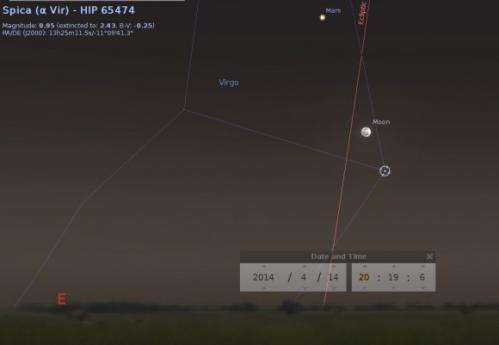'Bright light' on Mars is just an image artifact

Thanks to everyone who has emailed, Tweeted and texted me about the "artificial bright light" seen on Mars. And I'm so sorry to disappoint all the folks who were hoping for aliens, but what you see above is just an image artifact due to a cosmic ray hitting the right-side navigation camera on the Curiosity rover.
If you do a little research, you can see that the light is not in the left-Navcam image that was taken at the exact same moment (see that image below). Imaging experts agree this is a cosmic ray hit, and the fact that it's in one 'eye' but not the other means it's an imaging artifact and not something in the terrain on Mars shooting out a beam of light.
Update: according to Alan Boyle at NBC News, NASA imaging scientists think it could also be either a well-placed flash of reflected sunlight, or light shining through a chink in Curiosity's camera housing.
You can see the whole series of images from the right Navcam here.

Cosmic ray hits happen frequently on spacecraft that don't have the benefit of being in Earth's thick atmosphere. And frequently, people seem to get excited about what shows up in imagery that have been affected. For example, one guy thought there was a huge base on Mars based on some he saw on Google Mars.
Getting hit by a cosmic ray can have some serious consequences for a spacecraft—sometimes it can put them into what's called "safe mode" where only basic functions operate, or other times it can mess up data (like what happened with Voyager 2 in 2010 where the data sent back to Earth was unreadable). Usually, engineers are able to fix the problem and get the spacecraft back in working order.
Cosmic rays can even show up in imagery taken by astronauts on the International Space Station, like this one by astronaut Don Pettitt in 2012:

Astronauts also report seeing flashes—even with their eyes closed—whenever cosmic rays zip through their eyeballs. You can read more about that here.
And so far, none of these blips, lights or flashes seen on space imagery has ever been "because aliens."
If you really want to see some amazing things, look at the imagery taken by Curiosity in its currently location on Mars. See all the raw images here, or see some really great colorized and enhanced versions on 'amateur' imaging blogs like those by Stuart Atkinson, James Canvin, Damia Bouic, Emily Lakdawalla at the Planetary Society, or the work done by Ken Kremer.
Additionally, if you want to see bright lights associated with Mars, all you have to do is look up in the sky at night and see Mars shining brilliantly in the sky right now. Mars is in opposition, where it is closest to the Earth, and the "official" closest moment happens today, April 8th! Find out more about how to see it or watch different webcasts taking place today at our previous article here.

And for those of you who think we shouldn't give "air time" to nutty claims like lights on Mars, it is our policy to address and debunk such claims (for example, see our article debunking the latest end of the world claim) in order to make sure the real story and good doses of reality are out there, too, and available to people who are looking for the real story.
Source: Universe Today




















